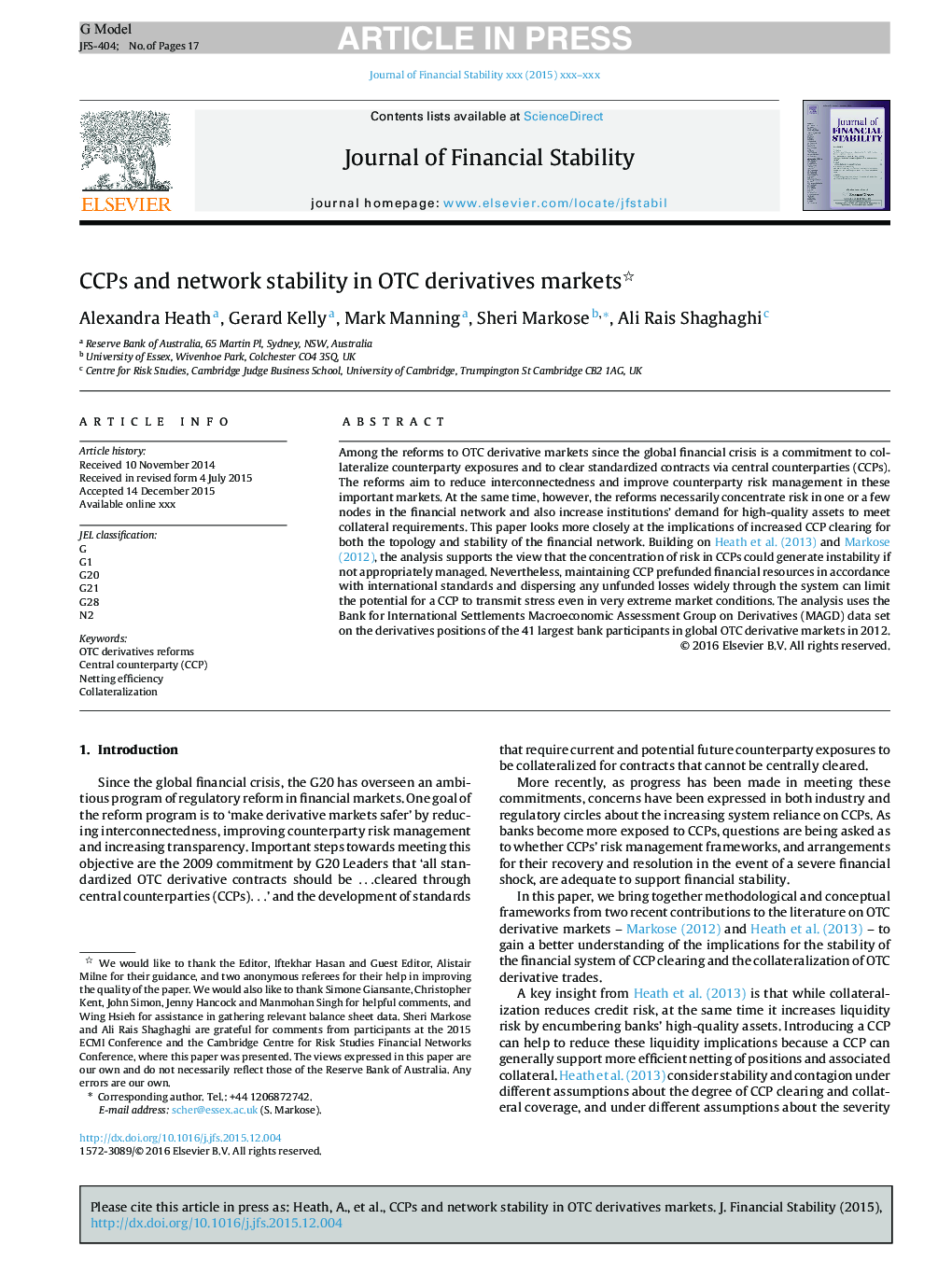| Article ID | Journal | Published Year | Pages | File Type |
|---|---|---|---|---|
| 5106571 | Journal of Financial Stability | 2016 | 17 Pages |
Abstract
Among the reforms to OTC derivative markets since the global financial crisis is a commitment to collateralize counterparty exposures and to clear standardized contracts via central counterparties (CCPs). The reforms aim to reduce interconnectedness and improve counterparty risk management in these important markets. At the same time, however, the reforms necessarily concentrate risk in one or a few nodes in the financial network and also increase institutions' demand for high-quality assets to meet collateral requirements. This paper looks more closely at the implications of increased CCP clearing for both the topology and stability of the financial network. Building on Heath et al. (2013) and Markose (2012), the analysis supports the view that the concentration of risk in CCPs could generate instability if not appropriately managed. Nevertheless, maintaining CCP prefunded financial resources in accordance with international standards and dispersing any unfunded losses widely through the system can limit the potential for a CCP to transmit stress even in very extreme market conditions. The analysis uses the Bank for International Settlements Macroeconomic Assessment Group on Derivatives (MAGD) data set on the derivatives positions of the 41 largest bank participants in global OTC derivative markets in 2012.
Keywords
Related Topics
Social Sciences and Humanities
Economics, Econometrics and Finance
Economics, Econometrics and Finance (General)
Authors
Alexandra Heath, Gerard Kelly, Mark Manning, Sheri Markose, Ali Rais Shaghaghi,
